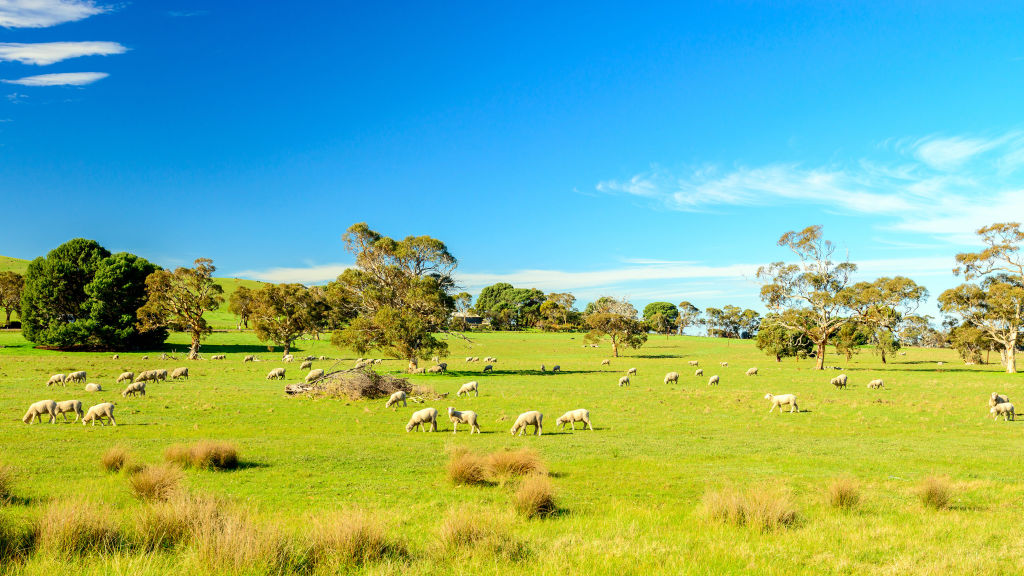
Growth slowing but outlook ‘still positive’ for rural land prices
Predicted rainfall and cheap credit are expected to buffer slowing agricultural land prices in the next 12 months, rural property experts believe.
Land values grew by 5 per cent in 2019, Rabobank’s latest index for agricultural land prices indicated, though an 8.8 per cent compound annual growth rate was recorded in the five years to the end of 2019, according to the group’s 2020 Australian Agricultural Land Price Outlook.
Despite the result, Wesley Lefroy, agricultural analyst at Rabobank, said the market was generally entering a period of low-to-no growth in the next 18 months, as it went through “the worst economic crisis in decades”.
“We believe 2020 signals the beginning of a new phase in land markets across the country,” he said.
“This has been prompted by the east coast transitioning to drought recovery, trailing effects from high-profit years beginning to subside, and the negative impact of the ongoing economic crisis on farm revenues and confidence.”
He noted that slowing price growth would vary by land quality, region and production type.
However, the agricultural land market is not all doom and gloom, with prices sitting at record highs in some regions, and no expectations for a significant fall in land values.
“La Nina may bring above-average rainfall to eastern and southern Australia during spring. Rainfall supports buyer confidence and purchasing power,” Mr Lefroy said.
“Some markets will move better than others, and it is likely that we will still see a number of marquee sales – especially for high rainfall properties with scale.”
He added that prices in regions with high production and reliable rainfall had grown at a faster rate than low rainfall regions.
“Typically, these regions are also very tightly held which further accelerates price growth.”
Mr Lefroy believed that other macro factors, such as the low cost of funds, will help landholders avert a major downward correction.
Low borrowing costs, due to the low interest rate environment, have supported land prices by bolstering the buying power of farmers, who can borrow more than what they would have if interest rates were higher. This was also incentivising farmers to buy instead of lease land or agist their livestock, he said.
Mr Lefroy said drought-affected regions across the eastern seaboard were expected to move towards recovery in the next 18 months, which could see demand for farmland bounce back.
“As a part of this recovery, we are likely to see farmers shift their focus to consolidation. This will mean directing business investments towards building resilience rather than expansion,” he said.
“As a result, demand may recover slightly, but remain below pre-drought levels.”
Herron Todd White’s rural director Tim Lane was more optimistic, pointing out that the outlook for the next 12 months was “still positive”.
He attributed this to a combination of an improved seasonal outlook for the 2020 spring season, low interest rates and sound to strong prices in most commodity sectors.
While the drought has not been broken for many farmers, others are benefiting from what Mr Lane describes as “the best winter season for a long time”, which could be an indicator of a strong spring and summer ahead.
“One good season, however, cannot recover the impact of a few drought years,” he said.
“Often two to four years are required to get back to a positive position, have the capacity to reduce the debts created in the drought and then look forward.”
Despite this, Mr Lane said rural property activity was still strong during the drought, which was partly supported by reduced interest rates.
“[Interest rates are] now often below lease rates of return for rural land. Historically lease rates have been often lower than interest, this has added to demand,” he said, adding that the interest savings were “significant”, given the value of agricultural land.
“Overall, there is still strong local buyer demand and not a large supply of stock on the market so that suggests the market remains in good shape for the immediate outlook.
“Generally other than being an essential industry and everyone needs to eat, agriculture has rolled along very well.”
Tom Russo, general manager of real estate at Elders, agreed that there had been high demand from buyers, with transaction volumes “historically low” in the past 18 months, as land owners held on to their properties and sought to expand.
He said confidence in the market had been bolstered by long-term demand for agricultural commodities.
“While GDP [gross domestic product] may take a hit in the short to medium term, populations continue to grow and there are more and more mouths to feed,” Mr Russo said.
“For land values to deteriorate, we’d really need to see a dramatic change in some or all of these variables,” he said, citing commodity prices, low interest rates and seasonal conditions.
Mr Russo expects “subdued” price growth this year, and believes the market is approaching the point where returns on investment will slow down rapid land value appreciation.
“Buyer willingness to pay, and lender willingness to lend, will naturally cap pricing at some point and I do not consider that continued explosive growth is sustainable in the long term,” he said.
Despite this, he said deep-pocketed buyers, including local and offshore corporate farms and institutional investors, were still seeking to pump capital into the Australian agricultural property market.










